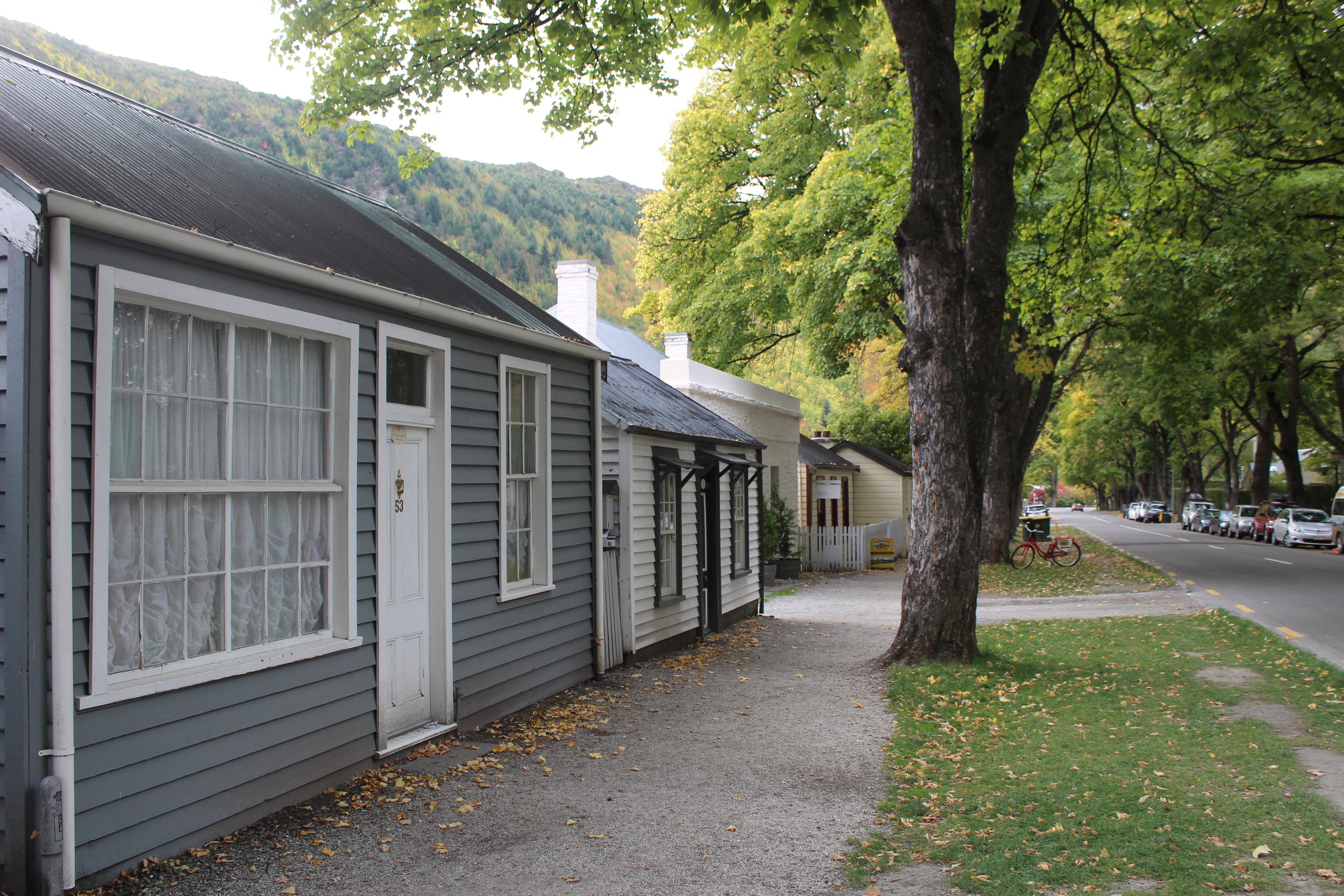Arrowtown had become more twee, a place for hipsters and people with plenty of money. It was fairly crowded with us tourists at 9.30 am. In our memories it was a gentle, slow-paced, sleepy town where we spent several overnight stays in the centre, visited the free museum (now $10 per person), panned for gold in the Arrow River, went to the outdoor swimming pool and played mini golf, soaking in the leisurely atmosphere.
This time we stayed at the holiday park where they packed us in next to each other, filling up the numbered spaces chronologically instead of letting us spread out over the half-empty site.
In the morning we ambled around the town, trying to reclaim that feeling from years ago. Arrowtown is famous for its autumn tints so this was a good time of year to visit, though a little later wouldn't hurt, as not all the trees had changed colour. Buckingham Street is home to a charming row of miners' cottages. At least the Chinese settlement had not been 'improved' and there was no charge for entry.
A few hours' drive took us down to Te Anau and finally Manapouri for the night where we discovered an eccentric holiday park. This was the New Zealand we were familiar with, the country that attracts people with a zany sense of humour and a love of collecting things, especially elderly vehicles. Most were no longer roadworthy but a few had been running quite recently. Unfortunately someone's collection was now a car graveyard.
Morris Minors occupied pride of place: a cheeky little row of them, like naughty children in permanent detention. Rusty trucks, a tractor, Austins, Triumphs, Hillman Imps. Later we found a barn sheltering more Morris Minors: split screen, rare - from the early 1950s perhaps in the case of a few - and a police Morris Minor. I am actually an ex-Morris Minor owner. Mine broke down on me eight times in the few years I had it.
We loved this holiday park. It was immaculate. Antiquated in the case of the kitchen and TV room, but so homely. And the showers were free for seven minutes. Around us were quaint buildings where people stayed, tiny houses, and cabins that had their own gardens full of vegetables. All with a stunning view of Lake Manapouri.

